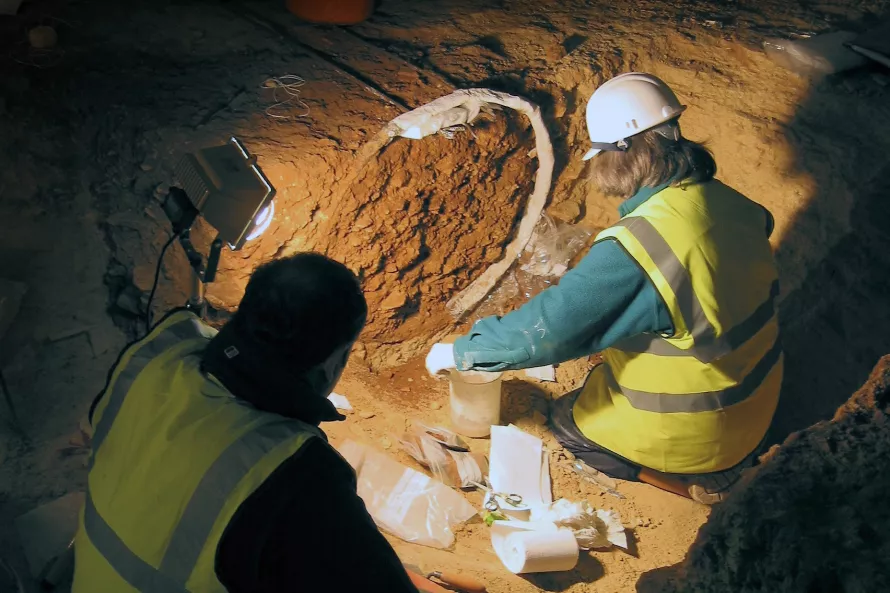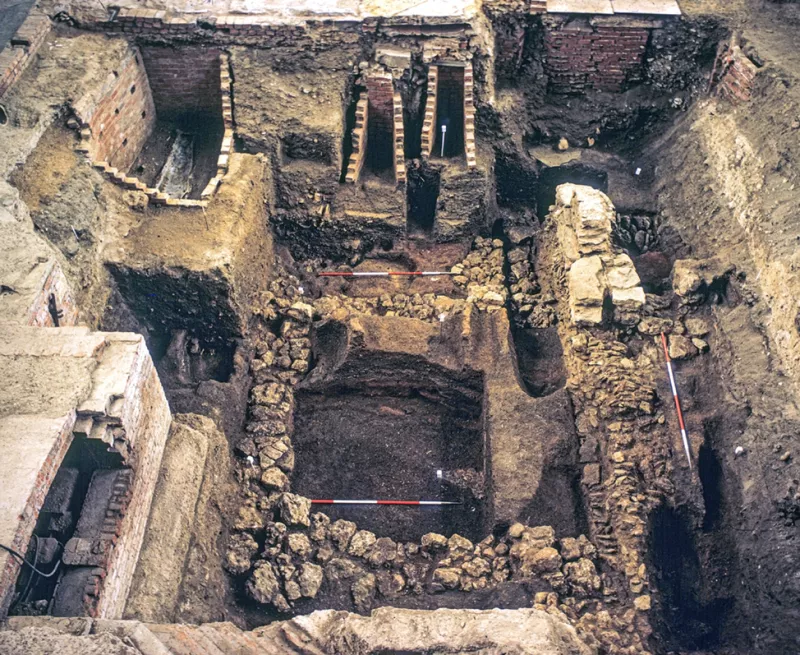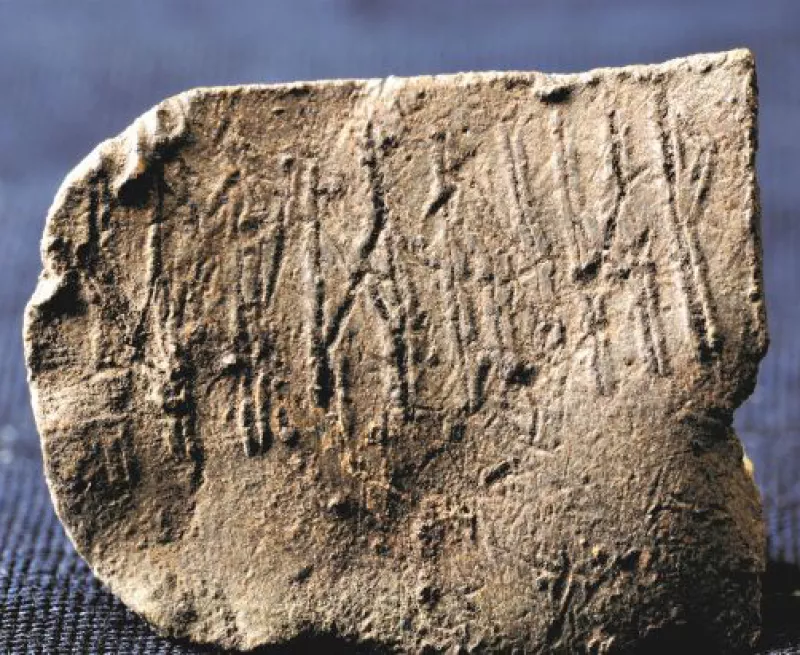The two-wheeled chariot had been placed in the grave intact, in an upright position, though without the horses that would once have pulled it. This is similar to a few other chariot burials (the Pexton Moor-type), mostly, like this one, outliers to the main concentration of chariots, in the Wolds. Its wheels did not match precisely, indicating that the vehicle had been cobbled together, presumably for the burial, as it would not have functioned well over a long distance. The body of a man, aged 30-40 years, had been laid on his back, with his bent legs over the axle and his head towards the north, over the pole. There were few accompanying grave goods, only a single brooch, suggesting that he had been buried clothed, and parts of a pig, perhaps the remains of a funerary meal. The burial took place in the Iron Age, probably in the fourth to second centuries BCE.
A mound had been raised over the grave, the material being upcast from a surrounding ditch. The remains of at least 25 cattle were found in the bottom of the ditch, presumably having eroded from the top of the mound. Perhaps the most unusual aspect was that its upper fill contained nearly 13,000 cattle bones, from a minimum of 162 animals. Radiocarbon dating indicates that these were deposited in the first to third centuries CE, some 500 years after the chariot had been buried. Even more surprisingly, stable isotope analysis suggested none had been reared locally, instead coming from a wide swathe of northern Britain, and perhaps as far away as what is now Scotland.




